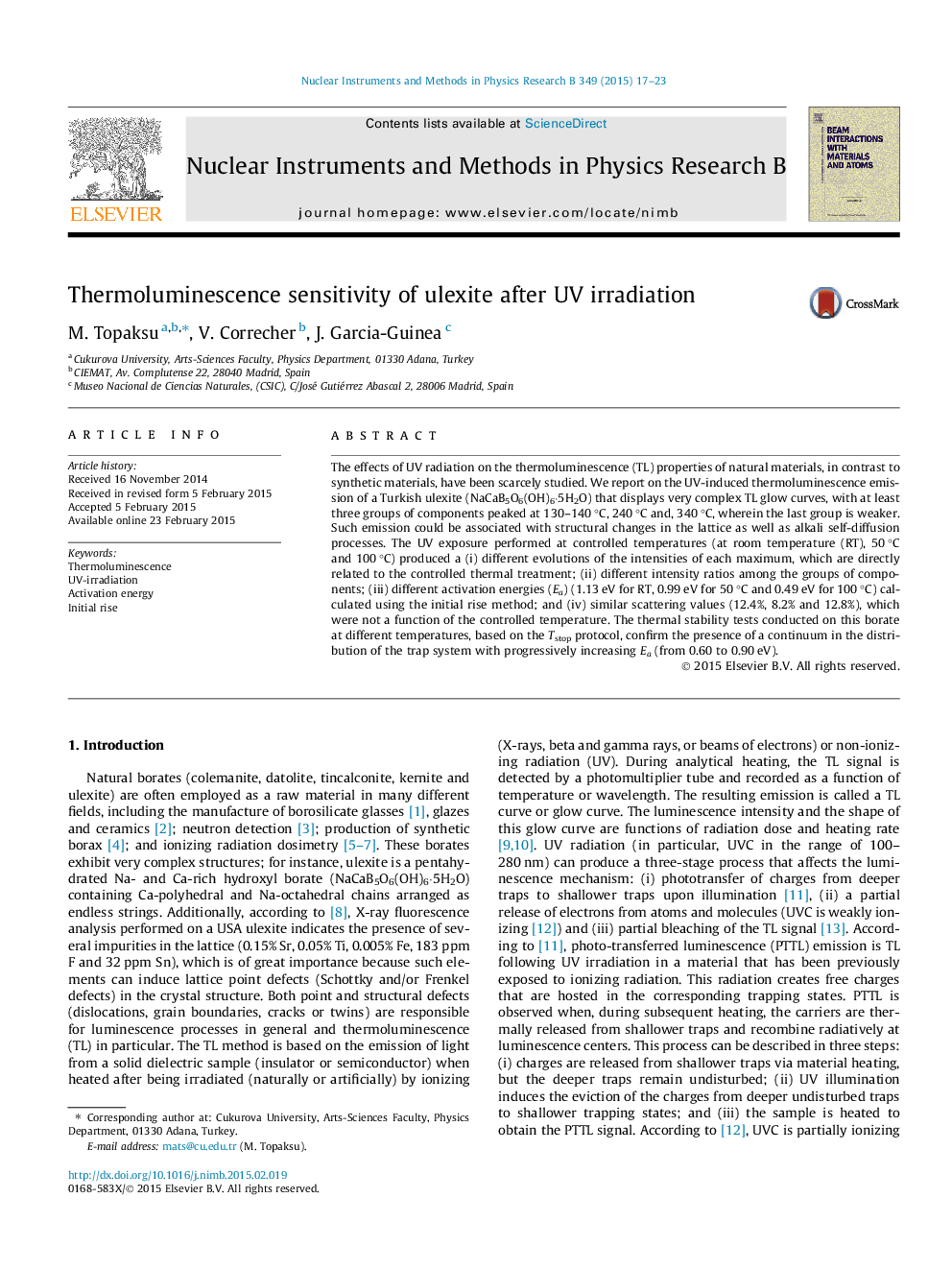| Article ID | Journal | Published Year | Pages | File Type |
|---|---|---|---|---|
| 1680208 | Nuclear Instruments and Methods in Physics Research Section B: Beam Interactions with Materials and Atoms | 2015 | 7 Pages |
Abstract
The effects of UV radiation on the thermoluminescence (TL) properties of natural materials, in contrast to synthetic materials, have been scarcely studied. We report on the UV-induced thermoluminescence emission of a Turkish ulexite (NaCaB5O6(OH)6·5H2O) that displays very complex TL glow curves, with at least three groups of components peaked at 130-140 °C, 240 °C and, 340 °C, wherein the last group is weaker. Such emission could be associated with structural changes in the lattice as well as alkali self-diffusion processes. The UV exposure performed at controlled temperatures (at room temperature (RT), 50 °C and 100 °C) produced a (i) different evolutions of the intensities of each maximum, which are directly related to the controlled thermal treatment; (ii) different intensity ratios among the groups of components; (iii) different activation energies (Ea) (1.13 eV for RT, 0.99 eV for 50 °C and 0.49 eV for 100 °C) calculated using the initial rise method; and (iv) similar scattering values (12.4%, 8.2% and 12.8%), which were not a function of the controlled temperature. The thermal stability tests conducted on this borate at different temperatures, based on the Tstop protocol, confirm the presence of a continuum in the distribution of the trap system with progressively increasing Ea (from 0.60 to 0.90 eV).
Related Topics
Physical Sciences and Engineering
Materials Science
Surfaces, Coatings and Films
Authors
M. Topaksu, V. Correcher, J. Garcia-Guinea,
